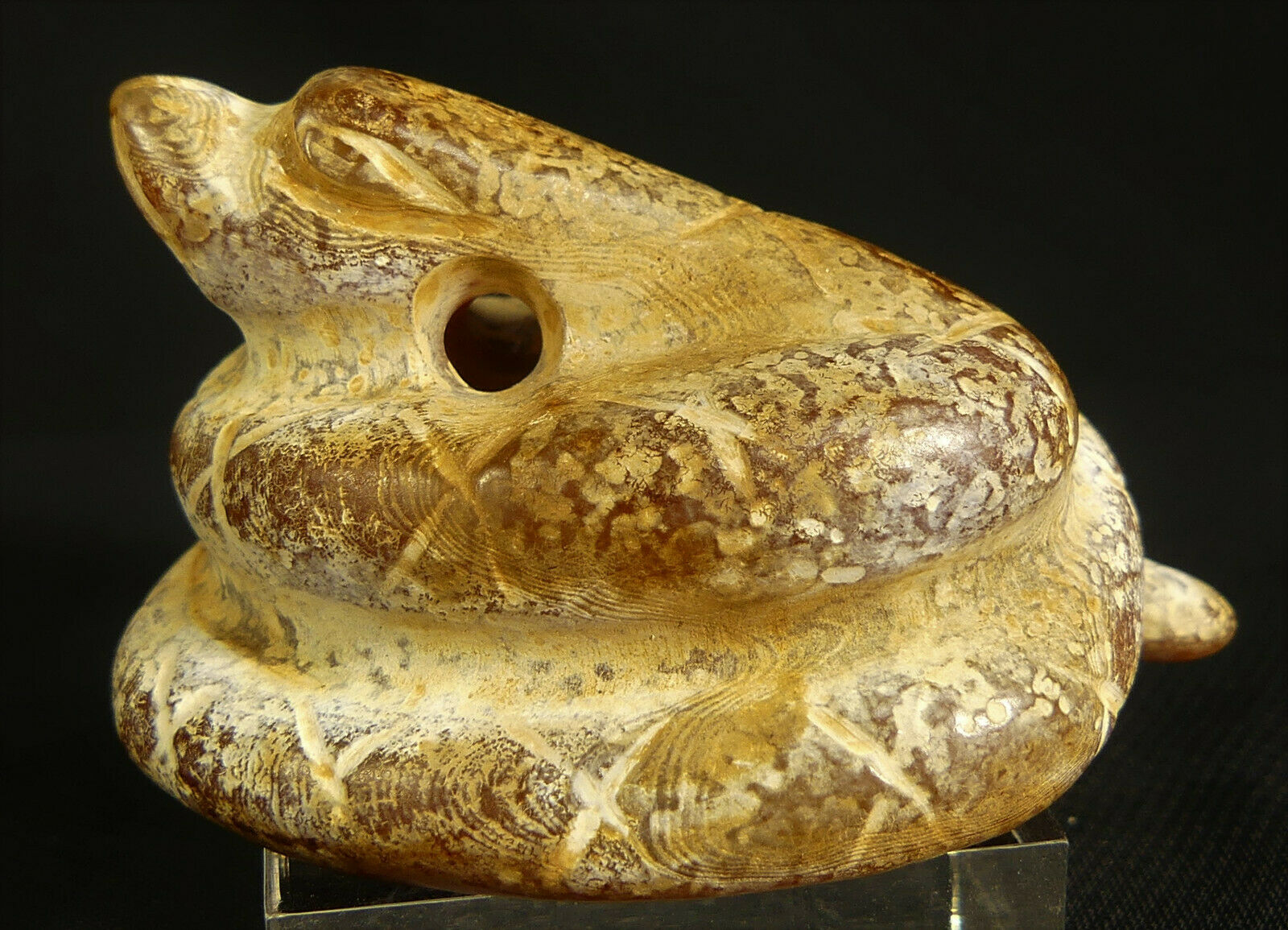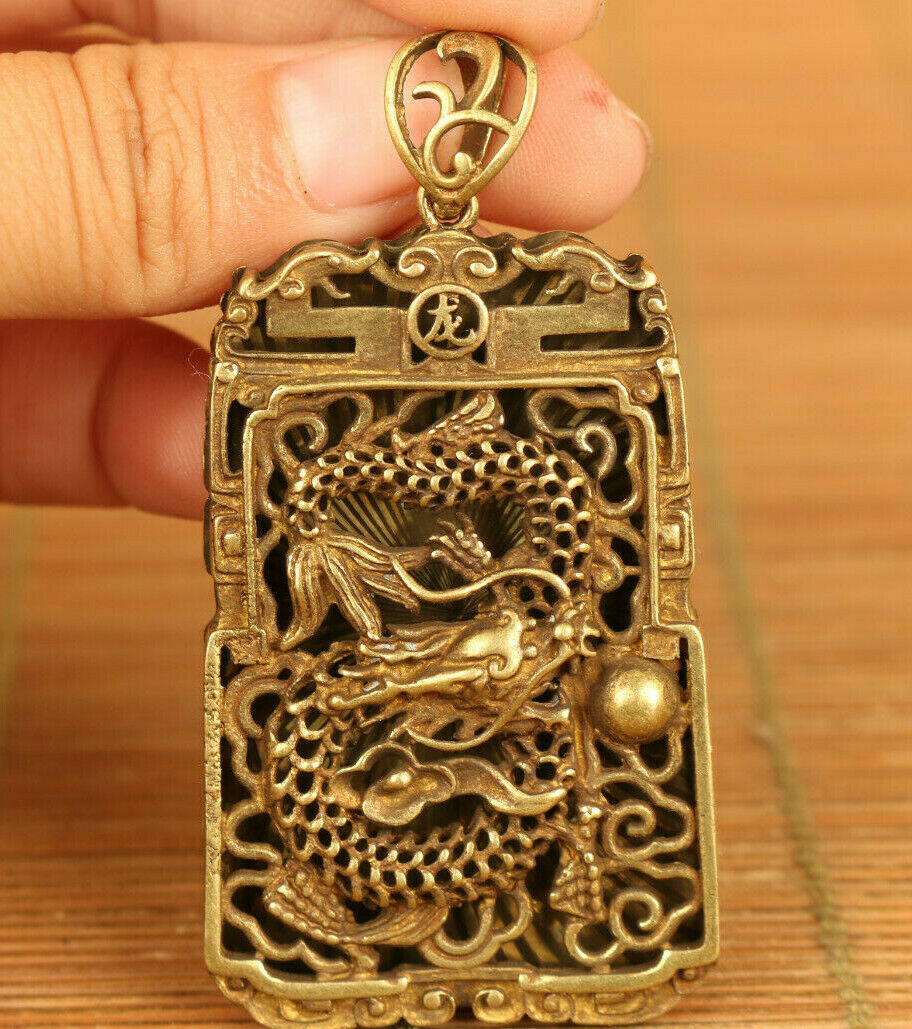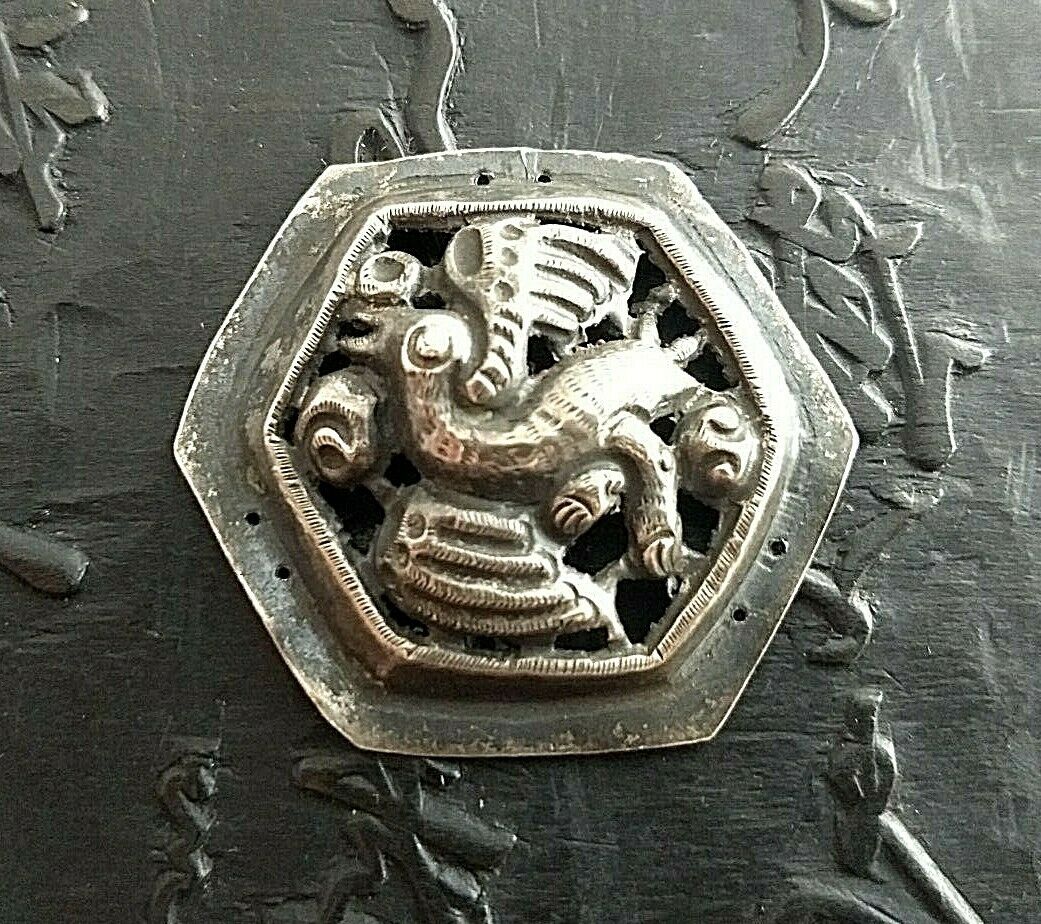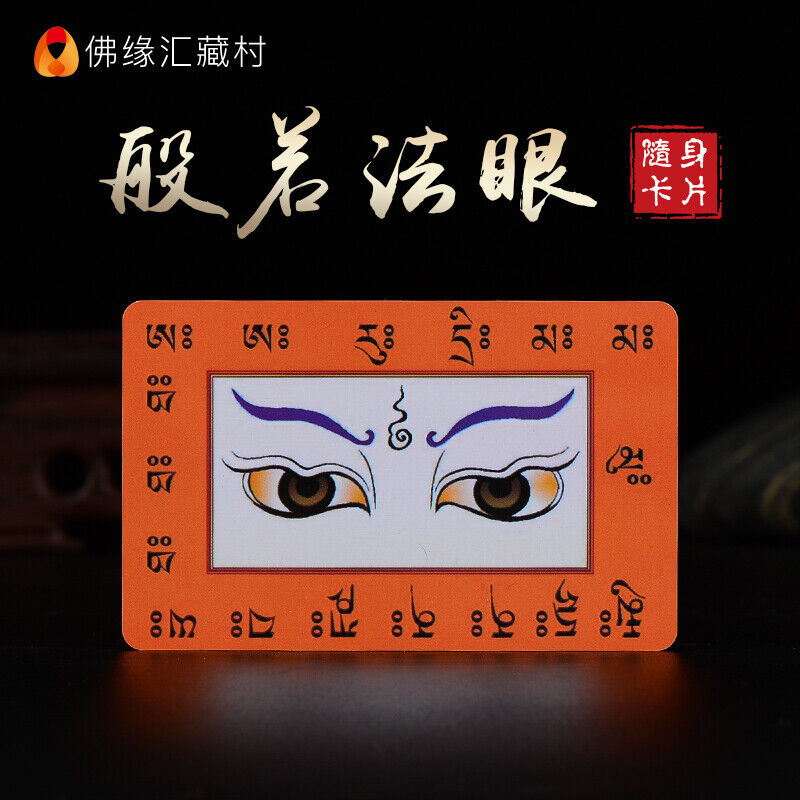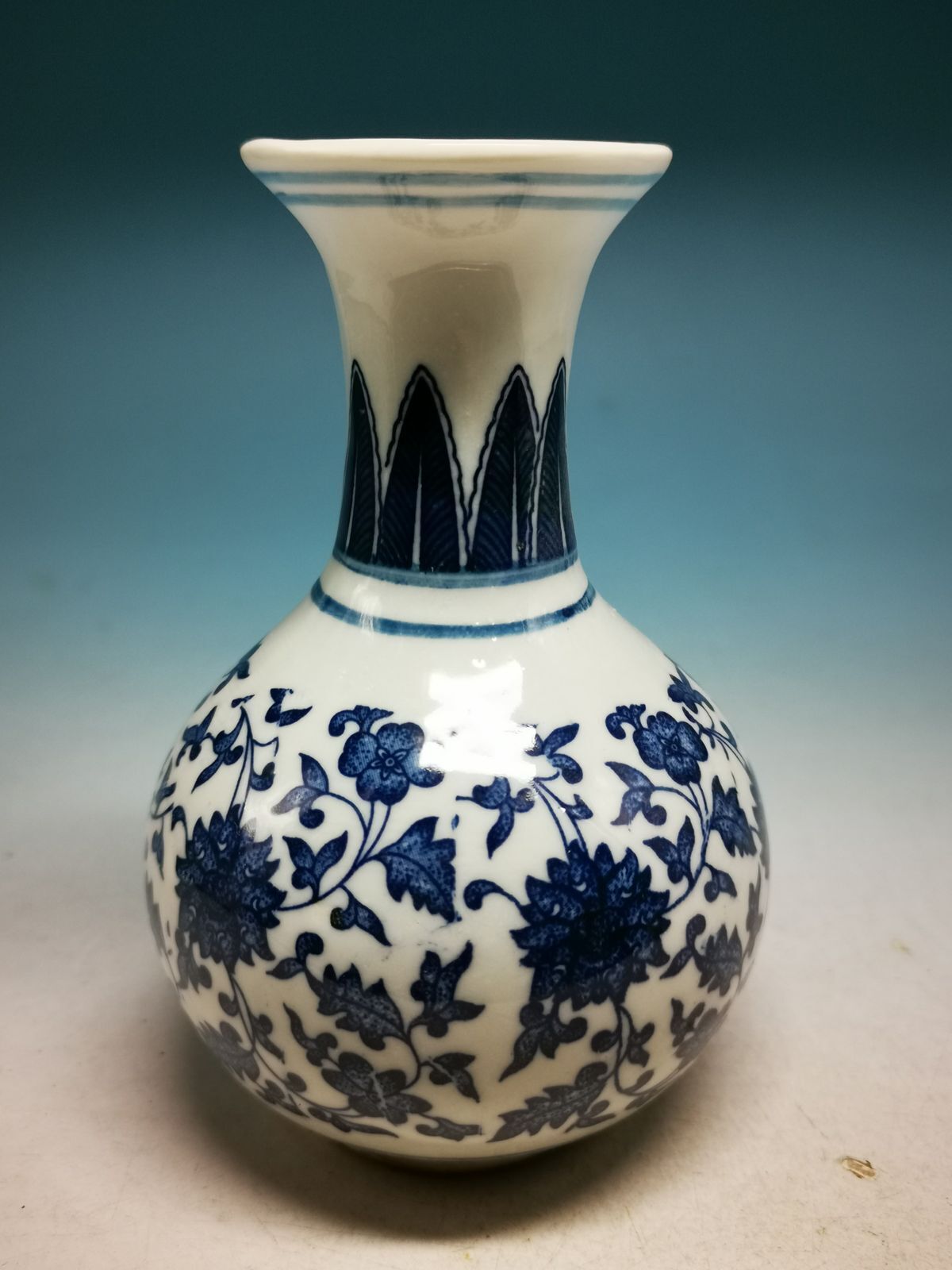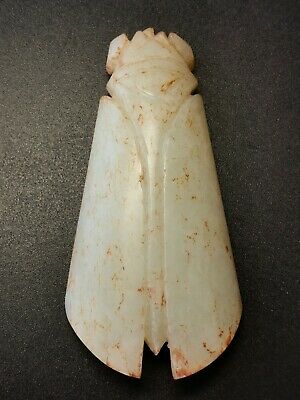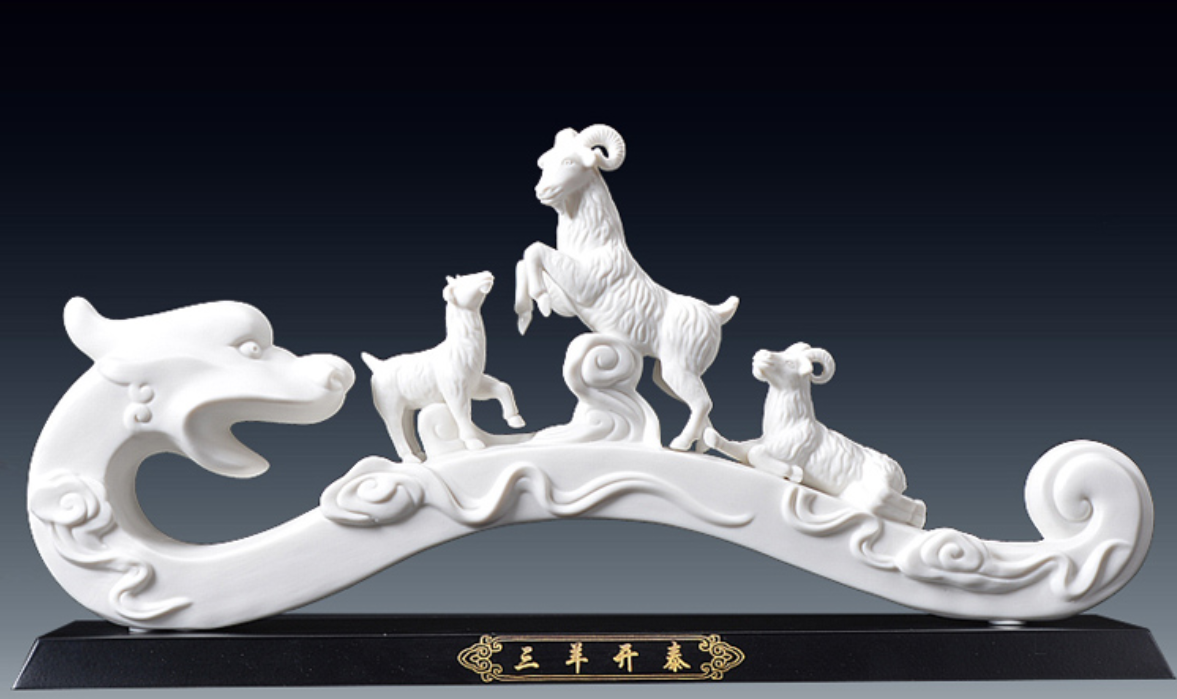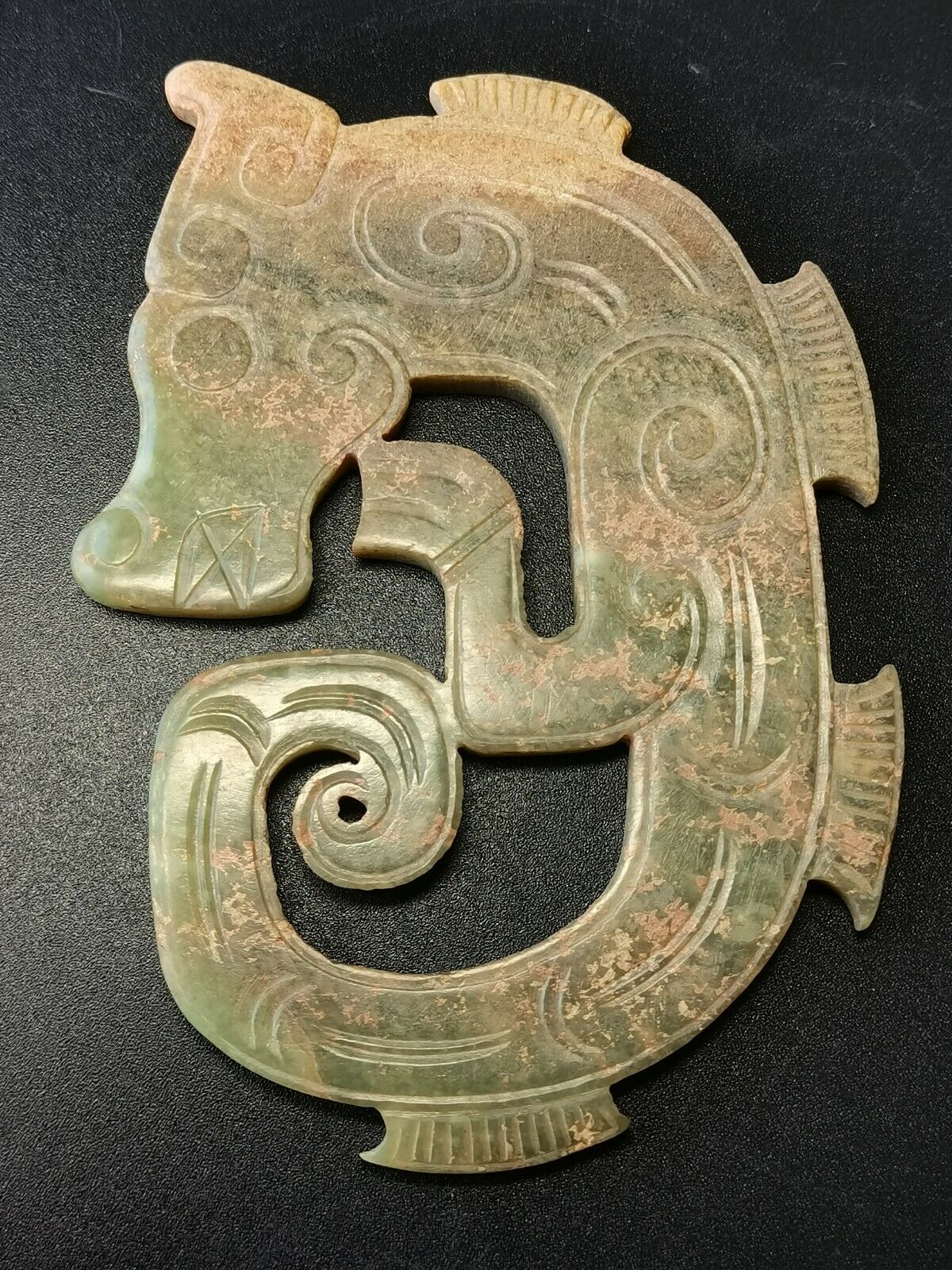-40%
Chinese Hongshan Jade Snake Immortality Amulet w/ 25-30 Characters w/Translation
$ 976.8
- Description
- Size Guide
Description
ANCIENT CIVILIZATIONSArtifacts, Antiques & Fine Collect
i
bles
Neolithic Chinese Jade Coiled Snake Amulet
c. Hongshan Culture
4500 BC—2250 BC
English Translation of Chinese Characters:
“On this Auspicious Day, the Sons Offer the Following Gifts to their Ancestors
on Behalf of Their Departed Father’s Perfect Work on Earth:
Raw Meat of Several Sacrificed Animals, Bronze Vessels,
and this Jade Snake Amulet to Ward Off Evil Spirits Several Times Over.
May Our Father’s Perfect Work on Earth and these Sacrifices,
Allow His Soul to Safely Journey to Eternal Life
with His Ancestors in Heaven (Ti’en).”
~Translated by WDH, Ancient Civilizations
SUMMARY
For the herpetologist or advanced Chinese jade collector, this
VERY RARE
, inscribed, Neolithic Chinese Snake Amulet is made of pure, ancient, Nephrite Jade that weighs about 1.9 oz. (53 grams) and measures approximately 1.16” (29 mm) tall x 1.41” (36 mm) thick x 2.00” (51 mm) wide.
It was made during the Hongshan Culture of ancient China about 4,000 years ago and has 25-30 ancient characters on its base! I Guarantee it to be authentic and original! The Snake is considered to be as longevous as the Turtle in traditional Chinese culture.
The Snake can also be the symbol of good fortune and a powerful force to scare away Evil Spirits that were thought to exist everywhere.
The coiled jade snake with almond-shaped eyes, appears to be a representation of a Chinese Cobra snake, depicted in an attack pose ready to strike. This poisonous snake (ancient Chinese “
T’o
”) is coiled in an elliptical shape.
This chosen shape of this snake amulet and the inscription on the base of it strongly suggests that it was presented as an offering from the Sons on behalf of their Father to the Ancestors in Heaven.
This ritual ceremony would have taken place on an auspicious and favorable day, perhaps the fifth day of the fifth month of the Chinese calendar (May 5
th
).
This is the festival of the Double Fifth (
Duanwu
) and many of the activities traditional on this holiday involve expelling various sources of potential evil influences. One of these involves driving away the Five Noxious Creatures (
wu du
), of which the Snake is one.
Snakes often appear in myth, religion, legend, or tales as fantastic beings unlike any possible real snake, often having a mix of snake with other body parts, such as having a human head, or magical abilities, such as shape shifting. One famous snake that was able to transform back and forth between a snake and a human being was Madam White Snake in the Legend of the White Snake.
In fact, the double “XXs” over “XXs” that are engraved into this snake’s body is the character
Li
, that means “To Exchange Several Times.”
The Chinese cobra, also called Taiwan cobra, is a species of highly venomous cobra in the family
Elapidae
, found mostly in southern China and a couple of neighboring nations and islands. It is one of the most prevalent venomous snakes in mainland China and Taiwan, which has caused many snakebite incidents to humans that usually resulted in death to its victims in ancient China that did not have the use of anti-venom injections to counter the deadly poison.
Condition
As noted above, although this jade pendant is pitted and shows signs of differential weathering, it has a wonderful ancient patina.
It has not been repaired or restored, but has been partially cleaned in China by the previous owner to show the beauty of the jade and to reveal the characters.
The jade amulet has two small holes on the back side of the amulet that would have been used for suspension around the neck.
These holes have been drilled by ancient hand tools at low RPM from both sides of the amulet--see macro photos.
These are period correct and have a wonderful layer of calcium and micro-crystalline jade inside the bore holes—just perfect.
TRANSLATION
We know that this amulet was made in the mid-Hongshan Culture (4700 BC—2250 BC) because of the many characters on this amulet, as this Neolithic culture did not begin using this type of character instead of pictographs (also called graphics) until about 3,000 BC.
This style of writing called
Shuowen Jiezi
was used before the next type of Chinese characters were used to form a written language that we now call Seal Script or
Ku’wen
. The coiled body of the snake is engraved with repeating rows of what appears to be the letter “X” in English, but mean one of three things based upon the context it is use.
In very old Chinese, a single “
X
” with lines above and below the letter is the character “
Wu
” and can mean “
me, myself
” and/or a “
representation of Heaven and Earth
.”
In the ancient Chinese language called
Shuowen Jiezi
the character “X” on top of the letter “X” is “
yao
” or “to exchange.”
While two “XX” that are located directly over two “XX” is the Chinese character
Li
that means “
to exchange several times
.”
There are approximately 25-30 characters on the flat underside base of the snake amulet that are exceedingly small—most just 6—8 mm tall.
The natural pitting from weathering makes it almost impossible to make out the characters clearly enough to translate them.
However, I can make out the following characters:
·
Man making an offering (likely the Father) to the Ancestors.
·
Another man holding a flint knife over the animal he as killed.
A Grandson holding a skein of yarn in one hand, a symbol of the succession of generations. (
It looks like the number "8"
)
·
Animal who was been sacrificed during a ritual to please the Ancestors.
·
A flint knife used to kill the animal and cut the raw meat into slices that would have been put on shelves as offering to the Ancestors.
·
A Bronze vessel offering (it could have held meat for cooking or ritual wine).
·
Carved and Engraved Jade Snake Amulet itself.
·
Heaven (
Tien
)
·
A compound Chinese character that has a triangle shaped character “^” and “I” below it.
This ancient Chinese character can be translated as “
My Perfect Work
.”
It is meant to state to the gods and ancestors in Heaven that the person who wears this amulet and presents it with his soul to Heaven has achieved success on Earth and should be granted immorality in Heaven (
Ti’en
).
·
There appear to be several other exceedingly small (some <2 mm tall) ancient Chinese pictographic characters incised on the bottom of this amulet, but I am unable to see them clearly enough to translate them.
I have provided the following expanded translation the dedication/inscription found on the base of this Snake Amulet:
“On this Auspicious Day, the Sons Offer the Following Gifts to their Ancestors on Behalf of Their Departed Father’s Perfect Work on Earth:
Raw Meat of Several Sacrificed Animals, Bronze Vessels, and this Jade Snake Amulet to Ward Off Evil Spirits Several Times Over.
May Our Father’s Perfect Work on Earth and these Sacrifices, Allow His Soul to Safely Journey to Eternal Life
with His Ancestors in Heaven (Ti’en).”
In ancient China, this jade amulet would have been placed in the tomb or temple of the departed by his family, along with an offering of wine and meat. This offering would also help to protect him or her from evil spirits on his journey to the afterlife and to allow him/her to enter Heaven (
Ti’en
). It would also show the ancestors and spirits that he was a wealthy and honorable person and that he had sons and mandarins that could speak to the Heavens for him.
SNAKES in Ancient China {ref: Wikipedia}
The usual and general Chinese word and character for Snake is Chinese:
蛇
; pinyin:
shé
; literally: "Snake or Snakes." As a zodiacal sign, the Snake is associated with Chinese:
巳
; pinyin:
sì,
a proper noun referring to the 6
th
of the 12 Earthly Branches, or to the double-hour of 9-00-11:00 AM.
The Snake was called the Little Dragon by the ancient people, and the skin it shed was called the Dragon skin. It is said that the Snake wakes up from its long hibernation and creeps out of its den on the third day of the third month of the Chinese lunar calendar; therefore, that day is known as "The Dragon Head Raising Day.”
The specific Chinese name for the Chinese Cobra is
眼鏡蛇
(
yan-jing-she
) that means "Spectacled Snake," referring to the markings on the back of its flared hood that resemble eyeglasses.
Snakes (also known as serpents) are an important motif in Chinese mythology. There are various myths, legends, and folk tales about snakes. Chinese mythology refers to these and other myths found in the historical geographic area of China. These myths include Chinese and other languages, as transmitted by Han Chinese as well as other ethnic groups (of which 56 are officially recognized by the current administration of China).
Snakes often appear in myth, religion, legend, or tales as fantastic beings unlike any possible real snake, often having a mix of snake with other body parts, such as having a human head, or magical abilities, such as shape shifting. One famous snake that was able to transform back and forth between a snake and a human being was Madam White Snake in the Legend of the White Snake.
Other snakes or snakelike beings sometimes include deities, such as Fuxi and Nüwa and Gong Gong. Sometimes Fuxi and Nuwa are described as snakes with human heads and sometimes as humans with dragon or serpent tails.
On the fifth day of the fifth month of the Chinese calendar (May 5
th
) is the festival of the Double Fifth (
Duanwu
). Many of the activities traditional on this holiday involve expelling various sources of potential evil influences. One of these involves driving away the Five Noxious Creatures (
wu du
), of which the Snake is one.
DETAILS:
It is a very early example and is one of the few examples that has 25--30 engraved Chinese characters (pictographs) in low relief. It has a wonderful, natural, ancient patina with encrustations of calcium and other minerals.
The amulet has a suspension hole on the top of the amulet that is classified as "double-bevel hole" by anthropologists (see photos). These holes were made so a person could attach the pendant around his/her neck or to their waist. Each of the holes is round and was drilled by hand with a slow-speed drill from both sides. They are period correct and show the growth of tiny
micro-crystals of jade
inside the bore holes that can only happen after a piece of carved jade has been buried for thousands of years. These tiny crystals almost look like white powder and should never be cleaned off or removed, as they help to authentic the jade as millennia old.
In ancient China, this jade amulet would have been placed in the tomb or temple of the departed by his family, along with an offering of wine and meat. This offering would also help to protect him or her from evil spirits on his journey to the afterlife and to allow him/her to enter Heaven (
Ti’en
). It would also show the ancestors and spirits that he was a wealthy and honorable person and that he had sons that could speak to the Heavenly Ancestors for him.
JADE
Jade was highly prized by these early civilizations in China and it was thought to have positive energy to drive away evil spirits and bring good luck and fortune to all who wore a piece on their person--in life and in death. Jade was also believed to be a portal or messenger that could carry prayers to Heaven and send messages to those on Earth from departed ancestors and Gods in Heaven.
This ancient Snake Amulet is a fine work of art and it is truly a museum quality piece of great historical significance. Its beauty and attention to detail is remarkable!
PRICE & VALUE
I have carefully examined this ancient jade amulet and I GUARANTEE it to be 100% original and authentic or your money back! I’ve looked under magnification under both natural and UV (Black Light) and I can find no signs of any modern tool work or repairs. The hand-tool marks left in the jade by the master stone artist who carved, shaped, and incised this work of art appear to be consistent with those marks of other ancient jades I have examined.
Each object I sell is professionally researched, translated (if I can...(smile), and compared with similar objects in the collections of the finest museums in the world. I have been dealing in fine antiquities for over 45 years and although certainly not an expert in every field, I have been honored to appraise, buy, collect, and enjoy and recently sell some of the finest ancient art in the world. When in doubt, I have worked with dozens of subject matter experts to determine the condition and authenticity of numerous antiquities and antiques. This careful examination helps to insure you are buying quality items and helps to protect your investment. There are many modern reproductions or "fakes" on the market today, so be sure and buy only from experts in the field.
Please examine the macro photos carefully as they are part of the description.
The stand and AA battery are not part of the auction, just included to give you a better perspective.
Note: Please ask any questions you may have before you bid! Thanks for Looking!
Per e-Bay's rules, PayPal only please! THANKS!
FREE SHIPPING for USA includes INSURANCE for all 50 United States.
International Buyers are responsible for any import taxes or duties, and shipping,
REFERENCES
1.
Museum of Chinese History, Beijing
2.
The Ancestral Landscape
, David N. Knightley, 2000
3.
The Great Bronze Age of China
, edited by Wen Fong, MET, 1980
4.
Changhua Annals of the Republic of China
(1911–1949)
5.
British Museum,
Jessica Rawson
6.
Smithsonian Museum, Sackler & Freer Gallery, WDC
7.
MET, NYC, New York
8.
Chinese Characters
, Dr. L. Wieger, S.J.
9.
"
JADE
" by Roger Keverne
